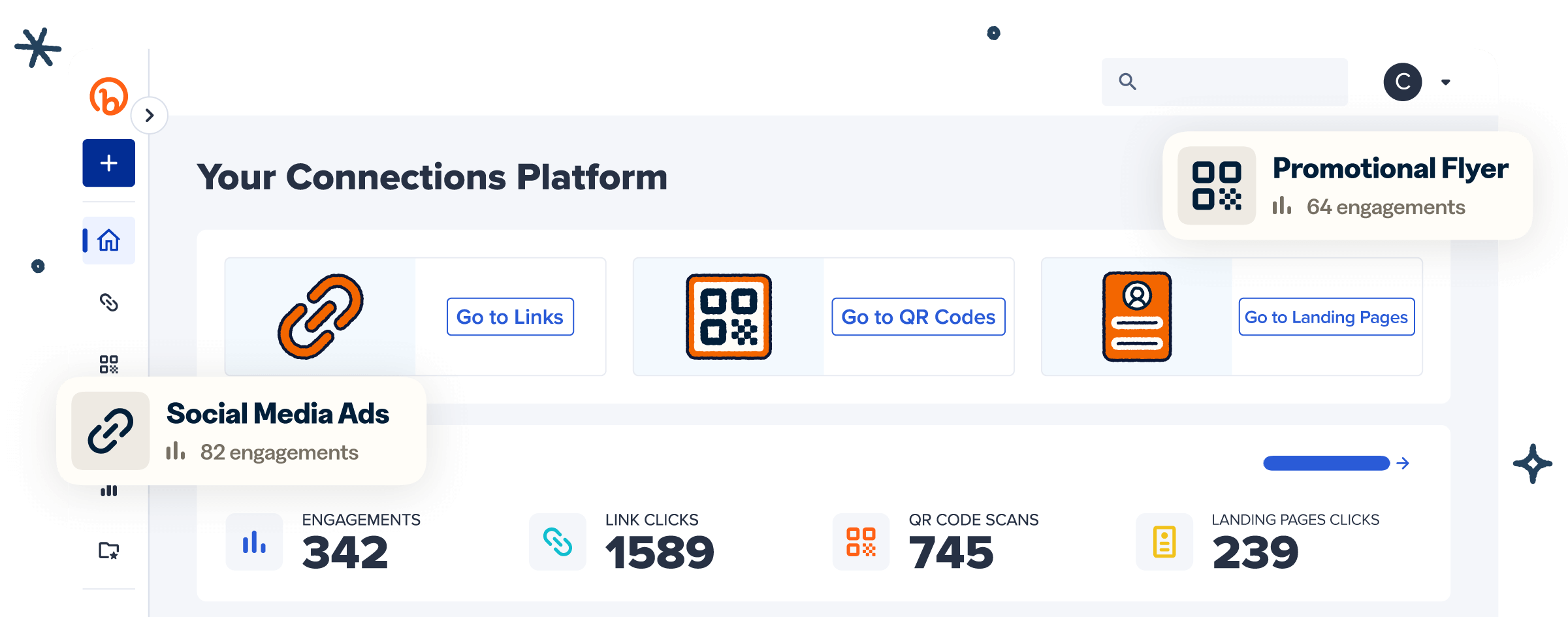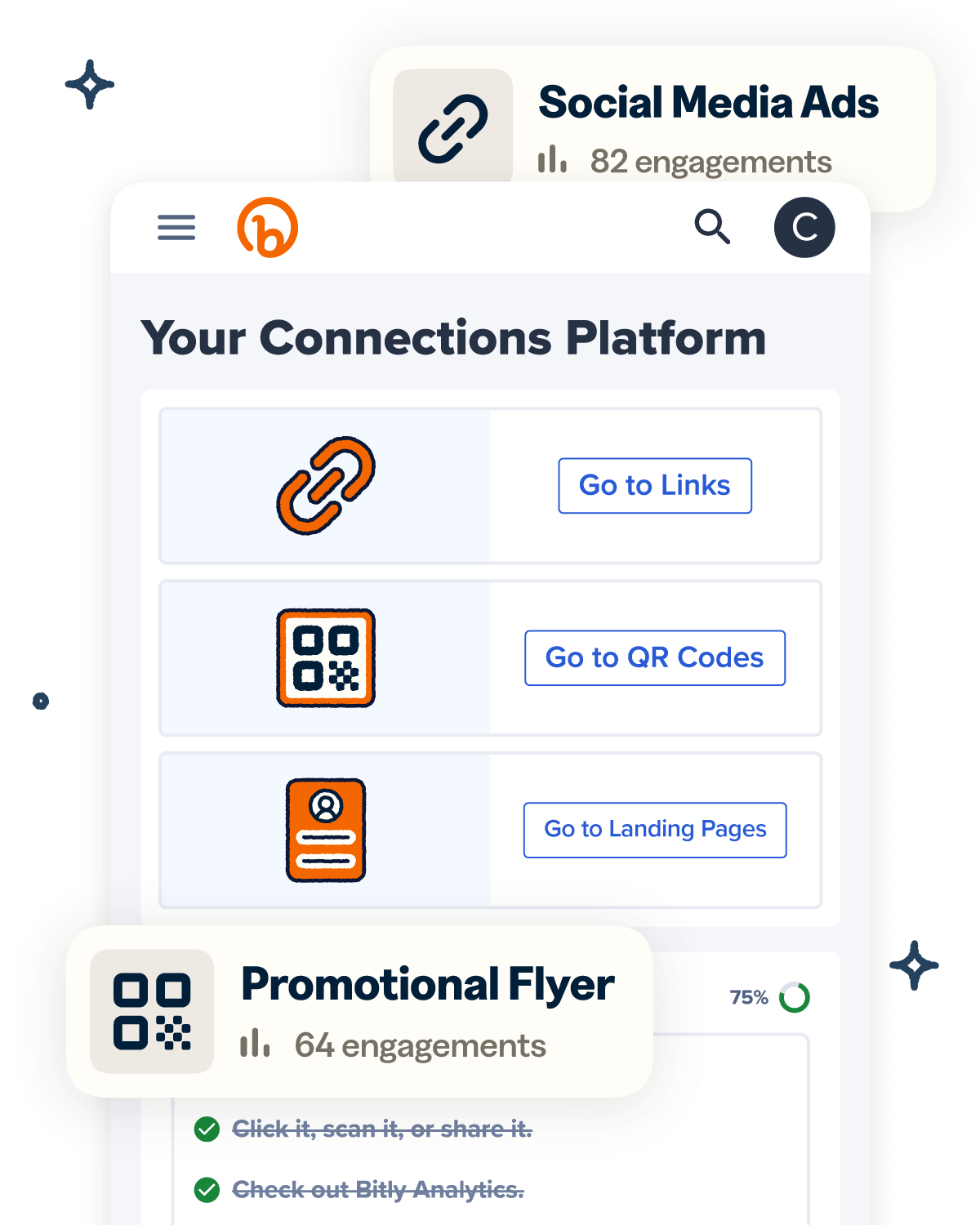How often do you hear friends or family rave about finishing a book cover to cover these days? Unless avid bookworms or literature students surround you, the answer might be “not often.”
Readership faces stiff competition, especially when it comes to printed books. More people are turning to bite-sized videos or quick online reads instead of diving into pages of text. But here’s the good news: You can win readers back by making books more engaging and dynamic.
How? With the power of Quick Response (QR) Codes.
Adding QR Codes for publishers to your books can provide an interactive reading experience, increase engagement, and even boost sales. In this how-to guide, we’ll walk you through the basics of using QR Codes for books and publishing.
Note: The brands and examples discussed below were found during our online research for this article.
How QR Codes have transformed the publishing industry
QR Codes are becoming a staple in books and publications, transforming how readers experience content.
Why? The answer lies in the fierce competition shaking up the industry: Audiobooks and ebooks are giving physical books a serious run for their money.
According to the Pew Research Center, 30% of Americans now read ebooks. While many people still adore the feel of a physical book, publishers are looking for ways to make reading more interactive and appealing.
That’s where QR codes come into play. QR Codes bridge the gap between physical and digital formats, allowing publishers to cater to readers who value the touch and feel of a book and tech-savvy individuals who enjoy the convenience and features of digital formats.
In educational settings, textbooks can now come equipped with QR Codes that link to supplementary videos, interactive quizzes, or 3D models. Children’s books also incorporate QR Codes to bring stories to life. These codes can link to animations, songs, or sound effects that correspond to specific pages in the book.
Even in standard novels, QR Codes can link to author bios, Amazon web pages or bookstores where readers can purchase the next book in the series or a corresponding listening playlist that matches the story’s feel and mood.
The benefits of QR Codes in books: Enhancing the reading experience
QR Codes enhance the reading experience across all types of books, providing readers with a multi-dimensional experience. Some specific use cases for QR Codes in books include:
- Instant connections to multimedia content, such as videos, audio files, or interactive content.
- Exclusive access to author interviews or behind-the-scenes content related to the book.
- Links to supplementary materials, such as study guides or worksheets.
QR Codes are also cost-effective and sustainable for publishers. Instead of having to reprint books with updated content or include inserts like CDs or DVDs, you can easily link QR Codes with a new destination when needed. This saves money and resources and reduces waste.
Increased reader engagement
Want to keep your readers hooked and eager for more? QR Codes boost reader engagement by providing access to more than just plain text. With QR Codes, readers can open a wide range of interactive media content in seconds—all it takes is a scan.
Publishers can use QR Codes to:
- Link readers to author websites or interviews.
- Point to related books and video content that add context or extra details.
- Direct readers to discussion forums where people with similar tastes share their thoughts and ideas.
The payoff? Engaged readers stick around. The more engaged readers are, the more likely they are to keep up with new books and recommend them to others.
Additional content layers
QR Codes act as gateways to digital versions of books and related content. If you don’t want to carry a physical version around, you can scan a QR Code to access the product page for the digital version. From there you can choose to buy the ebook or audiobook, which are often less expensive than hard or softcover versions.
Further, students can easily access additional resources, such as quizzes and detailed book analyses, to help with learning and understanding. And with Dynamic QR Codes, publishers have the flexibility to update content without having to reprint or revise the book.
Improved accessibility
Modern publishers must accommodate diverse groups of individuals to remain competitive. QR Codes allow them to do just that by linking to:
- Audiobook versions on recommended platforms, making content accessible for those with vision impairments.
- Large-print formats for people with low vision, available at select retailers.
- Different language translations, helping publishers reach global audiences.
Easier marketing and distribution
There’s a lot of competition in the publishing industry, not only from big-name publishers but also self-publishers. In 2022, the number of self-published books reached 2.6 million in the U.S. alone.
How do you maintain or increase your readership and reach in a competitive market? By marketing your books and improving reader experiences.
QR Codes allow you to do both. Use them to connect readers to exclusive content, like a bonus chapter or promotional videos highlighting what makes your book a must-read—all perfect for building buzz before the release date.
Access to reader analytics
QR Codes can also link to landing pages with survey forms, helping you understand reader behavior and preferences. This is a great way to seamlessly collect opinions and determine what’s resonating with your audience, allowing you to focus resources in the right places.
If you create your QR Codes with Bitly, you can use Bitly’s Analytics tool to track how many people have scanned your QR Code, where they are located (city/country), and even what kind of devices they used. This helps you understand which parts of the world your book is most popular in and tailor marketing efforts accordingly.
Practical use cases for QR Codes in book publishing
QR Codes offer a smart, versatile way to enhance your publications, and there’s no limit to how you can use these revolutionary modern barcodes. But here are some practical ideas to get you started.
Interactive quizzes
Quizzes help elevate the interactive experience by allowing readers to test their comprehension—which is why so many teachers already implement them via QR Codes in the classroom. Readers can easily scan the code and access quizzes related to the book’s content, such as character analyses, plot summaries, or fun trivia.
QR Codes linked to interactive quizzes are especially suitable for children and young adult books, as they make for a fun and engaging way to learn while reading. They’re also ideal for mystery and detective novels, encouraging out-of-the-box thinking.
Virtual book tours
Some readers want to feel a connection with the authors they love. How do you cultivate that bond? Through QR Codes, of course! Publishers can link virtual book tour schedules and author interviews to provide readers with insider access to the writing process.
QR Codes can also link to virtual book readings and Q&A sessions, providing a more immersive experience for readers. Connect your QR Code to a calendar of upcoming events and a registration page that allows your audience to seamlessly register and set reminders.
Cooking demonstrations
QR Codes have also made their way to cookbook publishing houses. They help boost engagement by giving food enthusiasts access to audio and video cooking demonstrations or tutorials that showcase the step-by-step process of creating delicious dishes.
Some authors are already using QR Codes for cooking demos, including Molly Baz in her book Cook This Book. The book contains QR Codes that lead to short instructional videos, allowing anyone passionate about food to prepare their favorite recipes.
Documentaries or virtual museums
QR Codes help deepen readers’ understanding of books by linking to additional resources that provide further context and information, such as documentaries or virtual museum tours related to the book’s subject matter.
Just take a look at Usborne Publishing, which incorporated 180 QR Codes into its book, The Usborne Science Encyclopedia. These QR Codes lead to video content on animals in their habitats, science experiments, and animated lessons to help learners understand concepts faster.
Augmented reality world-building
Looking for ways to bring your sci-fi or fantasy novels to life? Use QR Codes to lead readers to augmented reality (AR) experiences where they can explore the fictional world in your books.
Augmented reality QR Codes can allow readers to visualize characters, places, and objects mentioned in the book. It adds an extra layer of immersion and excitement for readers, making them feel like part of the story.
QR Codes for children’s books
In children’s books, you can link QR Codes to videos of animated story versions, providing children with a visual representation of the characters and events.
QR Codes can also provide read-aloud audio, allowing children to follow the story as they listen to a narrator’s voice. You can even enhance children’s books by linking to printable illustrations that they can color in.
QR Codes for textbooks: Enhancing educational engagement
QR Codes for teachers are already seeing widespread adoption, so why not take them a step further? In textbooks, QR Codes can serve as a bridge between traditional learning and modern technology by linking to:
- Practice tests and quizzes.
- Discussion forums related to a specific topic.
- Case studies or references that provide further context.
- Virtual classroom resources, such as slideshows.
Step-by-step guides
With QR Codes, readers can access step-by-step guides, tutorials, and demonstrations related to the book’s content—especially handy for DIY books or instruction manuals.
For example, a home improvement book can have QR Codes that link to videos demonstrating how to safely complete different tasks throughout the home, catering to visual, auditory, and verbal learners all at once.
5 Steps to implement QR Codes in books
QR Codes will only benefit your readers and your business if they add value. Consider the type of content your QR Codes will lead to and where to place them for an enhanced reader experience. Here are some tips to guide you as you embed QR Codes in your books:
1. Identify what content would work with QR Codes
There are many types of content you can link to using QR Codes, such as videos, audio recordings, images, and interactive features. So think about the purpose of your book and what added value these types of content can provide readers.
For example, if you publish children’s content, your audience likely requires additional resources, like videos, to enhance comprehension.
2. Design and create Dynamic QR Codes
There are two main types of QR Codes—Static and Dynamic. Dynamic QR Codes can be updated and redirected to new content even after printing, making them ideal for publishing.
To create your own QR Code using Bitly:
- Log in to your account or create an account.
- Select Create new and choose Create a QR Code.
- Fill in all the relevant details.
- Tap Design your code to choose your preferred colors, pattern, corners, and frame.
- To customize your QR Code further, upload your business logo or desired image in PNG format.
- Select Create your code and Download your QR Code.
3. Integrate QR Codes into your layout designs
Once you have your QR Code, the next step is to embed it into your book. Consider the size carefully—QR Codes should be large enough for easy scanning but not so large as to dominate the page. Opt for a minimum QR Code size of 2 cm x 2 cm for easy scannability.
And don’t forget to consider placement. Include plenty of white space around your QR Code—called the quiet zone—so that the surrounding design elements don’t interfere with scanning.
4. Test the QR Code functionality
Before finalizing your design, test the QR Code to ensure it leads to the intended content, loads quickly, and is optimized for mobile viewing, as readers will most likely use mobile devices to scan the code. Test the QR Code with different smartphones and tablets to ensure it’s compatible with each one.
5. Let readers know what to expect
Readers are more likely to scan your QR Codes when they know what to expect. So, include a call to action (CTA) with every QR Code. Consider something like “Scan for narration” or “Scan for exclusive author interview,” depending on your use case.
How to measure QR Code success in book publishing
Knowing how many times a QR Code has been scanned can help publishers measure the success of their marketing efforts and track reader engagement. Through Bitly Analytics, publishers can see real-time data on scan rates, geographic locations (city/country), and even devices used to scan.
QR Codes can also provide valuable data on which types of content are most popular among readers. When you link different codes for different kinds of content, you can see which ones receive the most scans, helping you understand what resonates with your audience and adjust your content accordingly.
How Bitly can help publishers maximize QR Code impact
Implementing and tracking QR Codes in publishing may seem daunting, but Bitly offers a user-friendly platform that makes it easy for publishers to create, manage, and track their codes. Here’s how Bitly can help publishers maximize the impact of QR Codes in their books.
Customizable QR Codes for branding and reader engagement
Publishers can use Bitly to create visually appealing and branded QR Codes that align with their book covers and marketing materials. With the ability to customize the design and color of every QR Code, publishers can create a consistent visual identity across all materials, further engaging readers and strengthening brand recognition.
Trackable QR Codes for real-time analytics
Bitly Analytics also provides publishers with valuable insights into how often QR Codes are scanned, which types of content are most accessed, and even geographic locations of scans by city and country. This information enables publishers to refine their promotional efforts and create targeted marketing campaigns based on reader engagement and preferences.
Easy integration with marketing campaigns
The versatility of QR Codes makes them an ideal addition to any book marketing strategy. When you use Bitly for digital marketing, it’s easy to incorporate QR Codes into social media campaigns, book launch events, or email marketing efforts to boost overall engagement with readers, as well as book sales.
Elevate publishing and boost reader engagement with QR Codes
It’s a digital world, and publishers must find ways to move with the times to maintain their readership. QR Codes are the perfect tools, offering seamless integration of digital content with traditional formats to improve readers’ experiences.
With Bitly’s QR Code generator, you can create custom, branded QR Codes linked to any URL—whether it’s an AR experience, informational video, or exclusive interview. Plus, you can update the destination URL at any time, without reprinting the code.
You’ll also get access to advanced analytics for valuable insights into reader preferences and engagement to enhance future offerings. Bitly has everything you need to deliver an interactive reader experience that fuels a whole new generation of book lovers.
Sign up for Bitly today and start elevating your publishing efforts with QR Codes.




